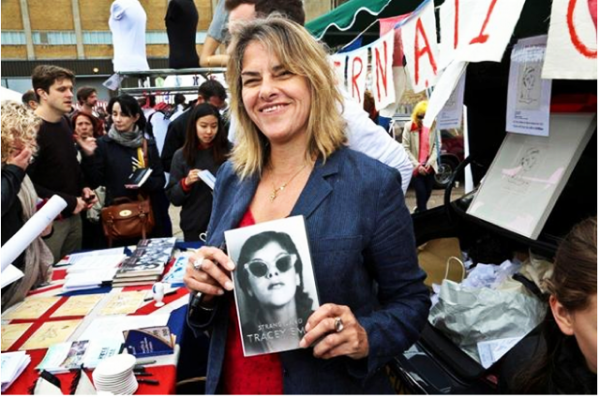
It’s not always all about big money. Tracey Emin might have hit the headlines when her Bed sold for £2.5 million ($4.3 million) at Christie’s last month (see: “Christie’s Rides Tracey Emin’s Bed to £99 Million Night“), she might be preparing her first major show in a London commercial gallery in years, but she’s not averse to a little bit of fun on the side.
The artist is one of the many A-listers who will take part in Folkestone’s inaugural Vauxhall Art Car Boot Fair (a “boot fair” being the British equivalent of a swap meet). Scheduled to coincide with the launch of the triennial in the Kentish seaside town on August 30, the event will see Emin, alongside the likes of Gavin Turk, Mat Collishaw, and Sir Peter Blake, sell limited edition works from the back of a Vauxhall car. Created especially for the fair, the pieces will range from £50 ($82) to £800 ($1,325).
The Vauxhall Art Cart Boot fair was launched in London in 2004, and it has become a fixture of the British art world, injecting some much-needed lightness and humor into the art business. From its home in Shoreditch, it has traveled the country, most recently landing at the Liverpool Biennial.
Emin has long been a supporter of the project, but this first outing in Folkestone will no doubt have a particular resonance for the artist. She was born and grew up in Margate, an hour’s drive north of the seaside resort, and has been involved very involved with the triennial. For the first edition in 2008, she installed bronze replicas of baby clothes throughout the city. These are now part of the triennial’s permanent collection, which also features works by Christian Boltanski, Cornelia Parker, and Richard Wilson, among others.
As artnet News reported in the article “Tracey Emin’s Bed Heads to Tate,” the artist’s infamous Bed was purchased by Count Christian Duerckheim. The Cologne-based collector has agreed to lend the era-defining artwork to the Tate for a period of 10 years. It is expected to be in public display in the coming weeks.